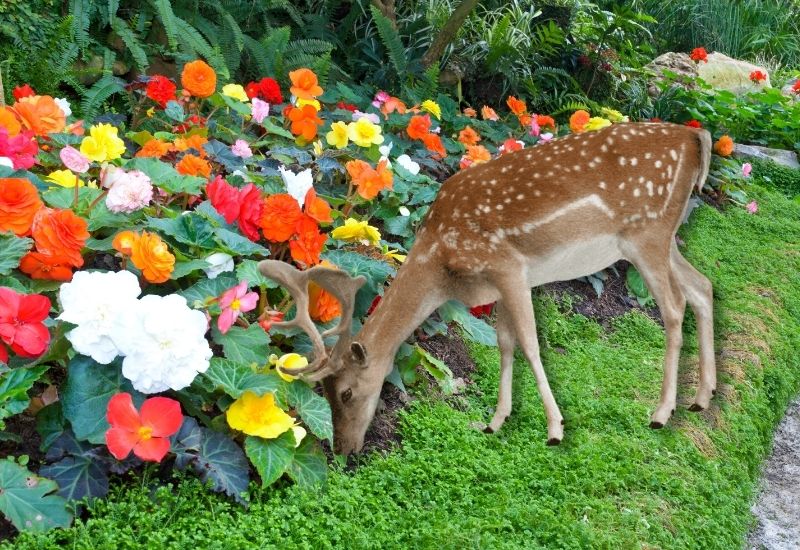
All sorts of flowers are deer’s top choice on the menu, roses, azaleas and pansies, but not begonias, people think. Things are not as straightforward though, and you may end up being disappointed. You plant your begonia rhizomes and wait with trepidation for them to bloom…
Then one morning you wake up to see if they have blossomed, but no you see the distinctive mark of big herbivore teeth! What’s gone wrong?
It is wrong to say that all begonias are dee resistant; waxy and leathery leaf begonias are perfect food for these animals. On the other hand, these four legged eaters of greens hate the fuzzy foliage that you find on some varieties, especially hardy and tuberous begonias.
Because things are not straightforward between deer and begonias, let’s clear up this subject once and for all, so you know how to choose as close to Bambi-proof begonia varieties that will not end up as a nice dinner for deer.
Begonias and Deer: a Short History
There are about 2,000 species of begonias from all over the world, but they come from areas where you will find no, or very few deer. They are tropical and subtropical plants, while deer like temperate and even cold regions.
These flowering plants are not even very cold hardy, so it’s very unlikely that a wild horned herbivore will fond some in a forest or on a meadow. But it is through gardening that begonias and de have come into direct contact.
This has an advantage: begonias are not part of a deer natural diet, so they will prefer other plants. This is a general rule, not a strict one. And to understand this, we need to look at the nuanced taste of these animals. Up next…
Deer and Flower Taste – How Much Do They Like Begonias
Deer like some flowers and leaves more than others and begonias are not top of their list. They will go crazy for hostas, roses, daylilies, rhododendrons, azaleas, pansies and violas… But when it comes to our subtropical flowers they are not so keen…
So, you may be lucky but… Deer even have personal preferences, and some herds take up unusual tastes for some specific plants. So you understand that if we want to be professional, we cannot generalize with these animals and what they eat.
What Makes Some Begonias Deer Resistant?
Deer do not like fuzzy leaves; they will even tolerate soft thorns, like on the young stems of roses, but fuzziness… No! It really is a matter of texture.
Like you like a cookie more than another and I can’t stand chewy chocolate bars, our cervine friends don’t like the feeling of tiny hairs on their tongue and palate. And some begonias have them.
Begonia Types That Deer Eat
There are some types of begonias that deer will eat quite eagerly. This is because they have the texture and consistency that these animals like. And as you know, begonias are divided into groups, so, let’s see them one by one.
Dragon Wing Begonias
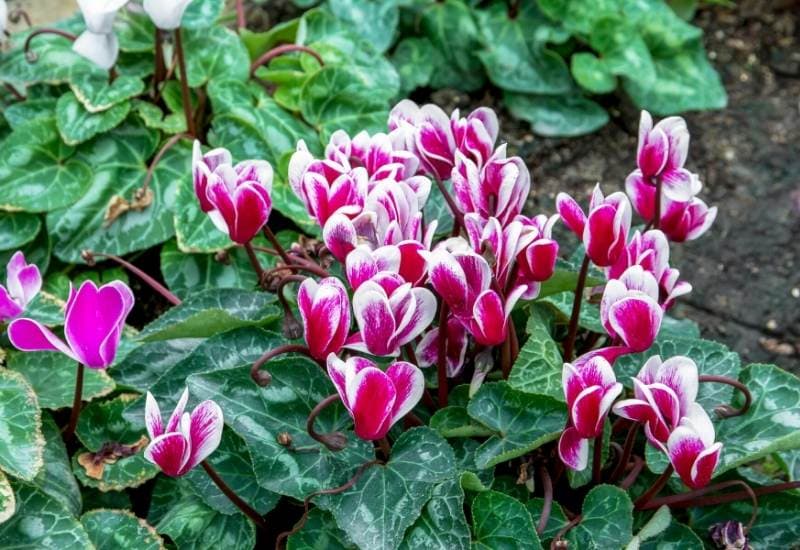
Dragon wing begonias are perfect food for deer. They take their name from the shale of their leaves, which are divided into two opposite parts, or “wings”, and they have small flowers in clusters.
Unfortunately these begonias have foliage with a smooth, glossy surface… And deer will have no problems eating them.
Wax Begonias
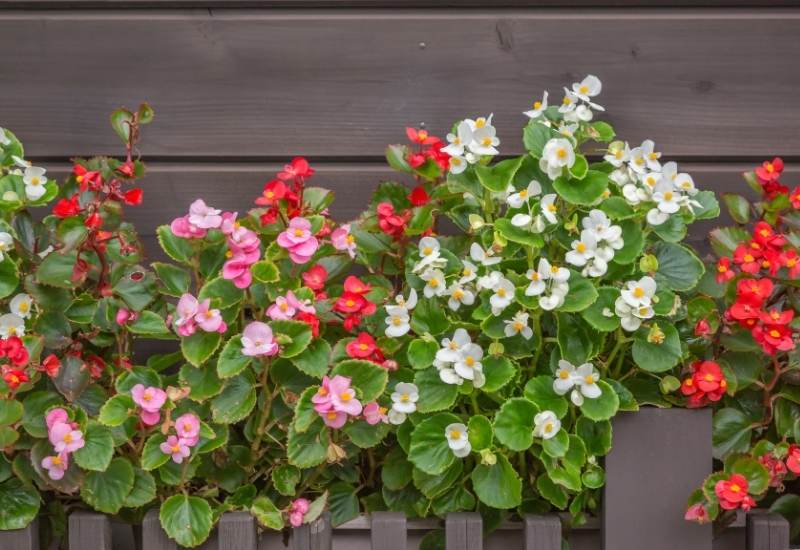
The clue is in the name; wax begonias are smooth and de will eat them. But they won’t be their favorite choice. I told you that they are picky, and it looks that even “too smooth” is not too good for them…
But they will eat them if they don’t find a better choice. For them, your garden is like a table of canopés or tapas… They can pick and choose!
Deer Will Eat Some Tuberous Begonias
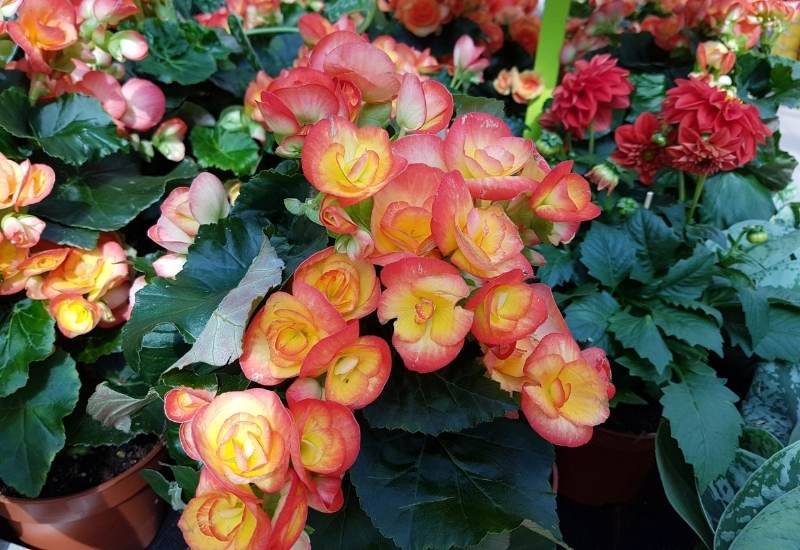
Tuberous begonias have large, showy and colorful flowers, but it’s the foliage that deer are interested in. Some plants in this group have hairy foliage, and deer will avoid them, others have smooth leaves, and they become more appetizing to deer.
Some Rex Begonias
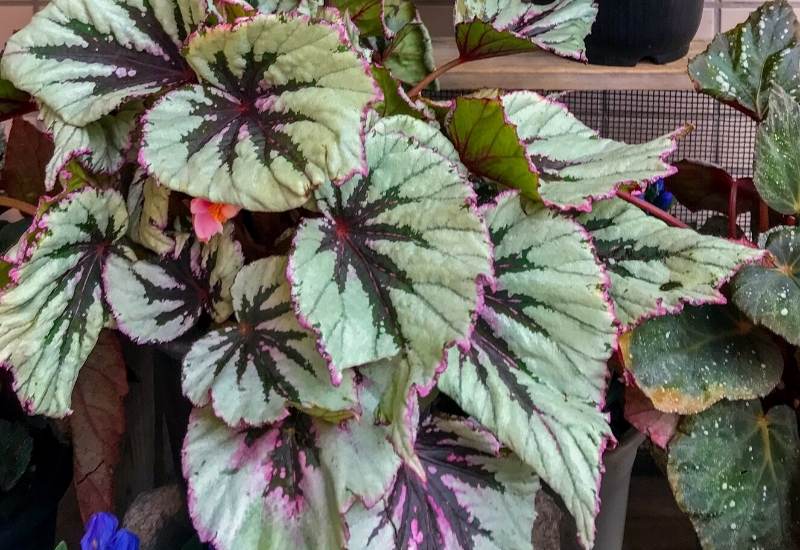
Rex begonias are a special group, because we grow them for their beautiful leaves. And some are smooth, some fuzzy. Deer will eat the former and turn up their noses with the latter. The problem is that a rex begonia with some leaves bitten off is really a disaster on the gardening front.
a Few Hardy Begonias
Hardy begonias have small flowers and lush, rich foliage, but this is fairly often fuzzy, and deer will leave it alone. However, don’t take it as “I am safe with hardy begonias”.
Not all have hairy leaves, and deer do not categorise these flowers like we do; they divide them into two: “hairy is yucky,” and “smooth is yummy”. For example, they will feat on the soft, smooth and thin leaves of Begonia grandis…
But even if you choose fuzzy begonias, you are not fully safe.
When Will Deer Eat Hairy Begonias?
Even if you plant a super hairy begonia variety, you are never really fully safe from deer. Why? The reason is that deer resistant does not mean deer immune.
It simply means that deer will avoid them, like when you have potatoes and Brussels sprouts as a side dish and you leave the sprouts on the plate.
But imagine if you only have the tiny green leafy balls to eat… You may pass at first, but when hunger mounts… even Brussels sprouts will do! The same applies to deer and fuzzy leaves.
They are not their favorite food, but it is still food for them.
The only plants that deer will never really eat are toxic and poisonous ones, and begonias are not among them.
How to Keep Deer From Eating Begonias
But you love begonias and you want to take a risk, make it hard for deer to eat them, and here are some simple steps you can take to prevent deer from eating your begonias:
Now, let’s get into the details of which begonias will end up as deer food, and which won’t.
Begonias Can Be Deer Resistant But They Are Not Deer Repellent
Deer will unusually leave your fuzzy leafed begonias alone, but they are not afraid if them. This means that they have no use in repelling these hungry visitors. Plants that do need to be strong smelling, or even poisonous…
But this gives us a hint…
Add Some Extra Safety for Your Begonias Against Deer
Begonias are never fully safe from hungry deer. So, let me tell you a trick… Mix in strong smelling plants with your begonias, and they will put off deer. For example:
These will help your begonias pass unnoticed, as the strong aroma is disgusting ro them, even if we like it.
And finally, choose the right variety!
Begonia Varieties That Deer Don’t Like
There are some “fairly safe” varieties of begonias that are fuzzy and deer will mostly leave alone, and we have chosen some of the best for you, as a sample.
1. Begonia ‘Silver Jewel’ (Begonia ‘Silver Jewel’)
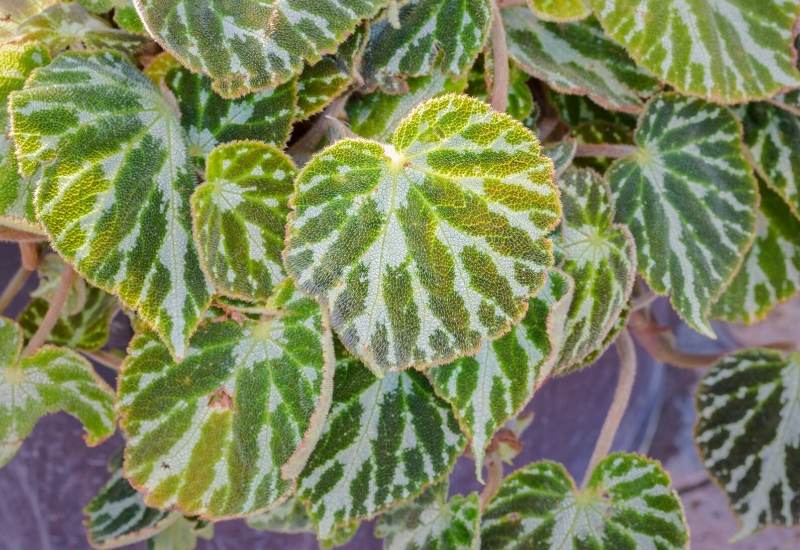
‘Silver Jewel’ is stunning evergreen cultivar you will want for its leaves, which deer don’t like. These are cordate (heart shaped) but round and green with silver dashes in them! Beautiful! But for deer, there is a major problem…
They are covered in annoying tiny little hairs… It is a delicate plant that grows well in pots or even indoors. It is so beautiful hat it has won the Award of Garden Merit by the Royal Horticultural Society!
2. Iron Cross Begonia (Begonia masoniana)
Iron cross begonia is an impressive variety for its deer resistant light green foliage, which has a dark brown, almost black cross on it. Unfortunately for our horned friends, it too has loads of fuzzy hairs on its evergreen foliage.
It is not at all a hardy begonia, though, and you can only grow it in hot regions or in containers. This variety too has won the Award of Garden Merit by the Royal Horticultural Society, no wonder!
3. Begonia ‘Fireworks’ (Begonia ‘Fireworks’)
Deer don’t appreciate the impressive evergreen heart shaped leaves of rex begonia ‘Fireworks’.
It’s a pity, because they have a radiating, dark brown purple center, then there is a light lime green area, at times tending in light silver blue, and then a light and dark pink purple edge!
This work of art is fuzzy, so, better for us! Pink flowers will appear on top of this iridescent foliage, and guess… It has won the Award of Garden Merit by the Royal Horticultural Society.
4. Begonia ‘Hanging Basket’ (Begonia ‘Hanging Basket’)
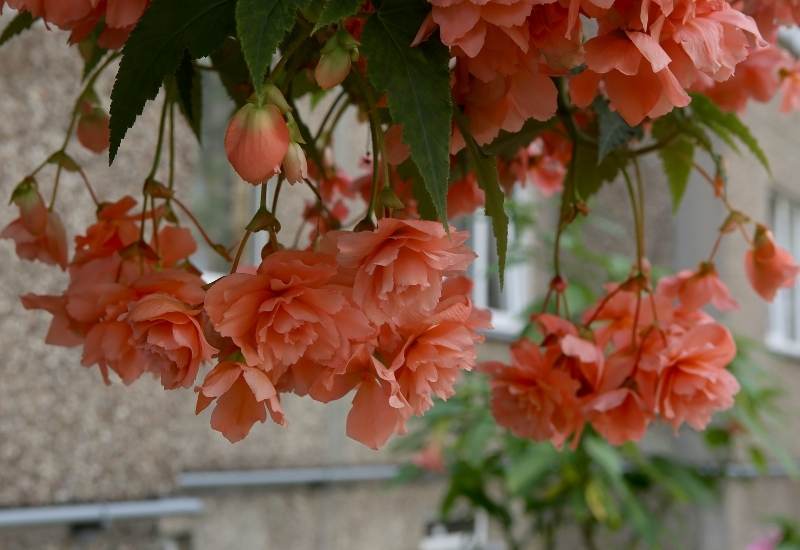
The name of this deer resistant tuberous perennial begonia is a giveaway; it has trailing branches and beautiful double drooping flowers that last from months on end. These can be oink, salmon, scarlet, yellow or white according to the cultivar you choose.
Yes, it is ideal for hanging baskets or to drape over pots and rock gardens, on steps and wherever you need green foliage and bright blooms, and even if a stag, doe or fawn visits, its fuzzy foliage will discourage them from having the odd bite.
5. Begonia ‘Picotee Lace’ Series (Begonia ‘Picotee Lace’)
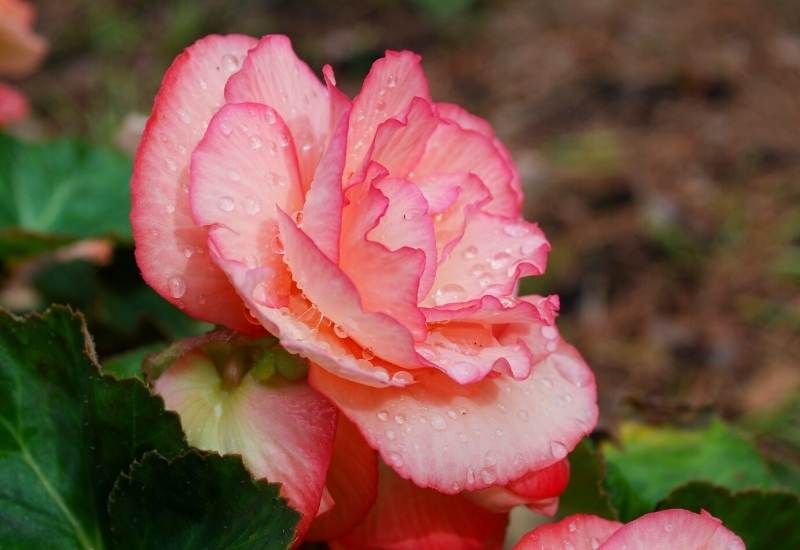
The late bloomer ‘Picotee Lace’ begonia series has fairly fuzzy leaves that deer won’t like. On the other hand, it comes in an impressive color range… ‘Flamenco’ is white and crimson red, ‘Calypso’ is white with tangerine edges, and ‘Sunburst is yellow with red edges.
Some have semi ruffled petals, others have fringed ones. The blooms are massive, up to 6 inches across, which is 15 cm! So, lots of colors and flowers but few deer around with ‘Picotee Lace’!
6. Sun Changing Begonia (Begonia soli-mutata)
We are lucky that deer don’t eat Sun changing begonia, because it’s a wonderful masterpiece! The fuzzy leaves are heart shaped, dark green with lime green stripes and purple undersides which show very nicely! They also have little bumps on them.
The strange fact is that the leaves seem to shift color with light changes! There are also small white flowers in clusters and… Well, it comes with a medal, the prestigious Award of Garden Merit by the Royal Horticultural Society!
7. Begonia ‘Ruffled’ Series (Begonia ‘Ruffled’)
The blooms of the ‘Ruffled’ begonia series are massive, up to 9 inches across (22 cm), and deer don’t like them, because the leaves are, you guessed, lightly fuzzy.
The foliage is dark green with beautiful veins, while the flowers, which are also very abundant, are fully double, with frilled edges and they come in white, yellow, apricot, salmon, pink or red.
8. Begonia ‘Roseform’ Series (Begonia ‘Roseform’)
‘Roseform’ is a series of unusual upright begonias with hairy leaves, so they are safe from deer, but… But the flowers are very special, because the petals unfurl in a spiral from the center, like they do in some roses.
And this is where the name comes from. The blooms come in cluster and they are abundant in the late months of the year. They can be yellow, white, pink, red, rose, apricot and orange – quite a range!
Begonias without Deer
So now you know the truth. Information can be confusing, but now you know that it’s the texture of the leaves that puts de off some begonias, and not all.
But now you also have a few tips and even a “safe list” of varieties you can grow…
Yes, you can have some begonias and sleep peaceful dreams…

Written By
Amber Noyes
Amber Noyes was born and raised in a suburban California town, San Mateo. She holds a master’s degree in horticulture from the University of California as well as a BS in Biology from the University of San Francisco. With experience working on an organic farm, water conservation research, farmers’ markets, and plant nursery, she understands what makes plants thrive and how we can better understand the connection between microclimate and plant health. When she’s not on the land, Amber loves informing people of new ideas/things related to gardening, especially organic gardening, houseplants, and growing plants in a small space.

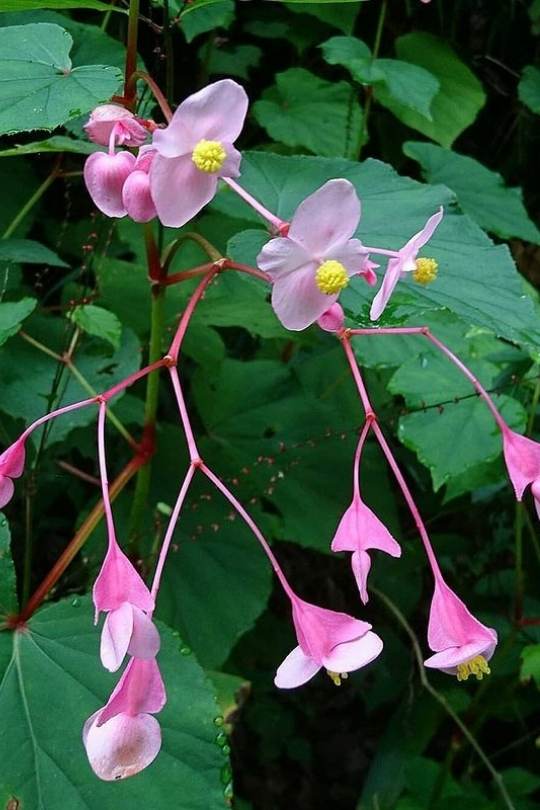
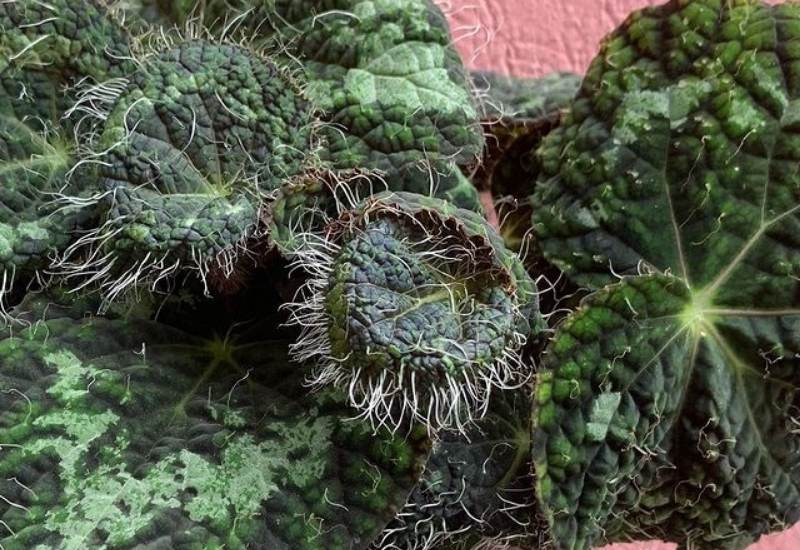
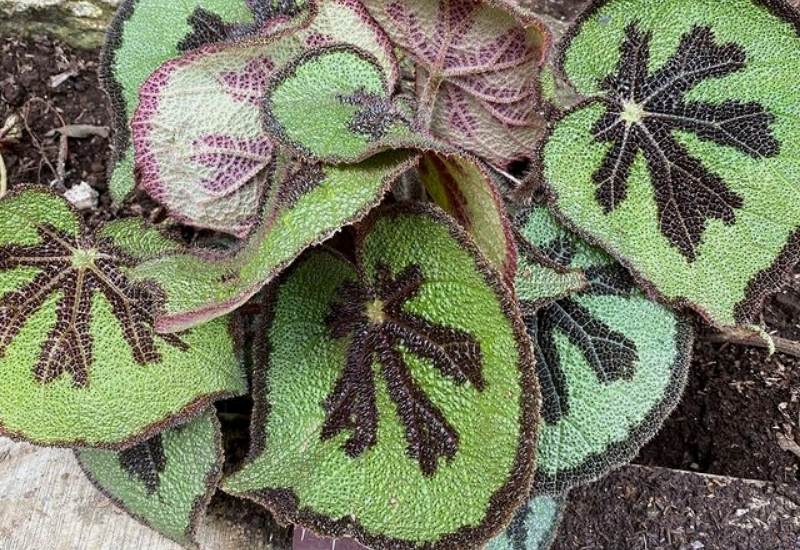
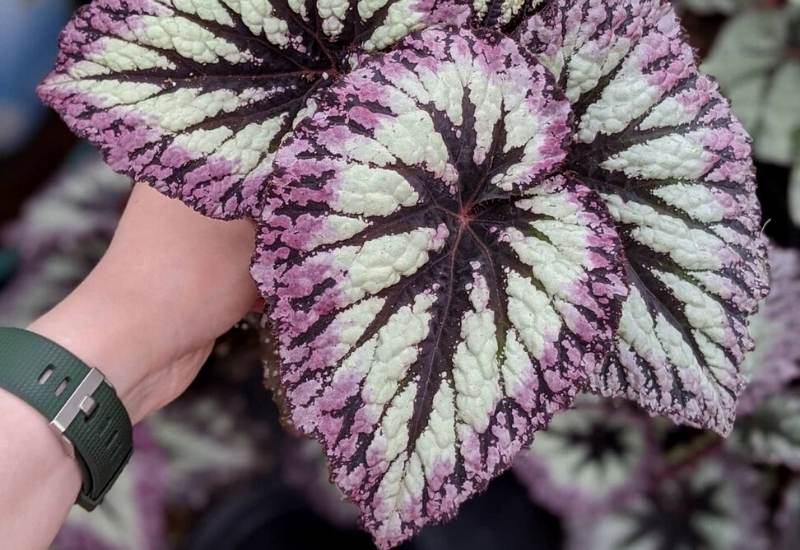
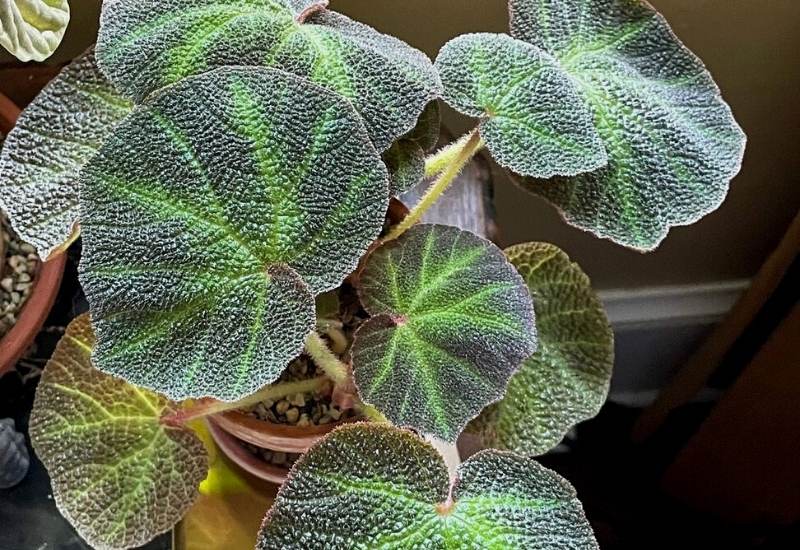
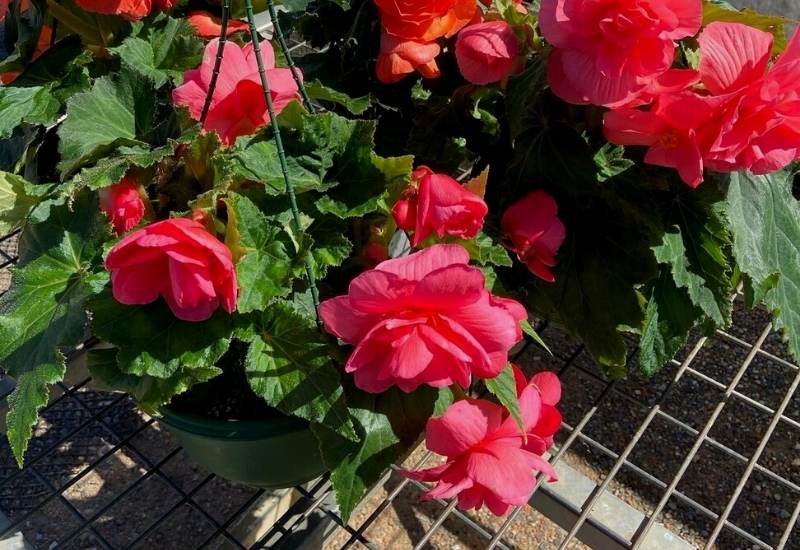
Thank you. The information is very helpful. Our community is over powered by deer searching for goodies. I am searching for patio plants that will survive the deer population, and you have provided me with guidelines for my patio and property. Nathalie
i hate to disagree with you but the deers where i live will eat all the begonias as first choice food. Here in sw Michigan next to a 100 acre state park, the deer roam around eating my shade annuals as soon as they bloom . I will try some others on your list though .
You’re absolutely right that deer can be voracious eaters and may target certain plants, including begonias. Living in an area near a state park with roaming deer can present challenges for gardening. It’s important to note that deer resistance can vary among individual deer and in different areas, so it’s always a good idea to monitor the situation and observe any changes.
I live in Wyoming deer country, I have fuzzy leaf begonias in pot on patio on stand. Woke up in morning and the tops blossoms were on ground and leaves gone and stems chewed down. So sad, but I love our deer here.